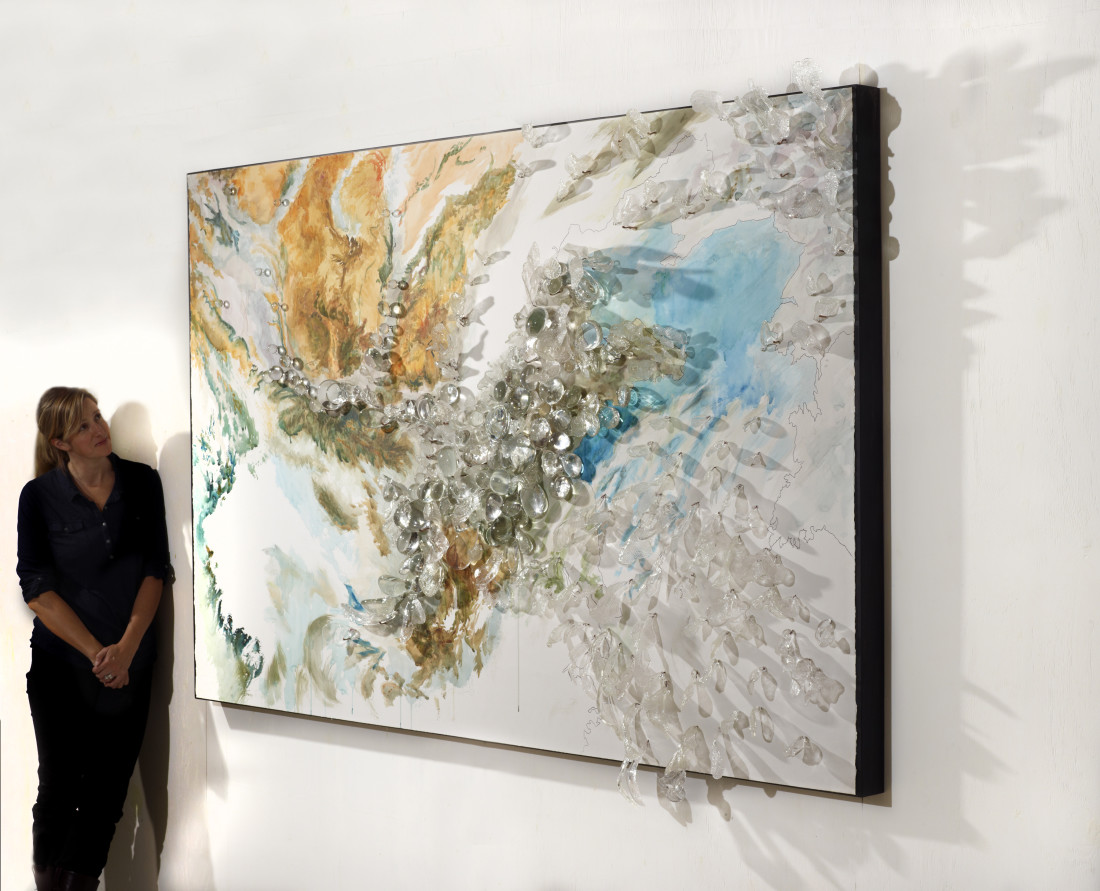“How is showing craft different from showing art?” asks Marilyn Zapf, the assistant director of The Center for Craft, Creativity & Design. “What does craft demand of the gallery space?” The organization’s Back to the Drawing Board series was developed to explore these questions and to investigate how the craft object can move beyond a static wall display. “Craft has recently been redefined as a verb, rather than a noun, an action as opposed to an object on a pedestal,” says Zapf.
The events on Friday and Saturday, Aug. 28 and 29, will be the last in the current four-part series. The “takeover,” as it’s called, includes a trio of artists who will each explore new approaches to traditional craft forms during the Friday evening segment and daylong segment on Saturday. “The short time-period is intended to evoke the idea of a sketch,” says Zapf. “When you are sketching or prototyping, you are freer to explore new ideas and make mistakes.”
Beginning with the concept of human impact on the environment, Penland-based glassblower Jennifer Bueno will be working on the piece “Material Iterations.” She’ll create two works on-site that reference the same NASA imagery as her displayed wall pieces, “Air Pollution Over China” and “Algae Bloom in Lake Erie.” Says Bueno, “I’m not just re-creating a picture, I’m re-creating an event.”
For the new iterations, Bueno plans to use alternate materials such as plastic, plant material, projected light and synthetic stuffing. She sees the relationship between her two sets of work as a divergence of process. “The originals’ materials are less fluid,” says Bueno. “Once you make a piece of glass and it goes through the process of cooling down, its form is pretty much set. I’ll be using materials that can be reshaped after the fact, and I expect I will be reworking as I go along.”
In addition to creating doppelganger artworks, Bueno will also have a doppelganger artist working alongside her. Actually, a few artists are scheduled for shifts throughout the event. “They are all creative people in their 40s, with children, like me,” says Bueno. “The idea is to have a double for everything so the process is exponential.”
Meanwhile, Chicago artist Aram Han has planned the participatory installation, “Immigrant Citizenship Takeover.” Using the 100-question test for U.S. immigration as both her imagery and content, Han will stitch the test’s questions and answers. She’ll also have a citizenship study station and another spot where viewers can to learn to sew. But the resulting sewn objects aren’t the primary goal — instead, Han believes that the conversations about the nationalization process are the most important result. “Being a craftsperson in today’s society is a political decision,” she says. “We live in a society where things are manufactured and too easily made by other people. So by engaging in craft, we are protesting.”
There’s a threefold concept behind Han’s decision to sew. She uses the craft to address the act of learning just as the children of Colonial America used sewing to learn the alphabet. She also sees the creation process as a demonstration of value similar to how wealthy adolescent girls would use their sewing projects to display their worth to potential suitors.
Han’s third conceptual reference point relates to current manufacturing practices. “Sewing is not just about performing craft. It is more specific in talking about the practices of immigrant labor,” she says. “Laborers in the garment industry — the majority being immigrants — do this type of work every day. However, we pay such little attention to them, their stories and their labor.”
The final takeover artist is Cheyenne Rudolph, a potter and performance artist from Gainesville, Fla. She’ll present “Domesterventions: Inventions for Domestic Interventions,” in which she’ll demonstrate the use of fantastical handcrafted products.
“The objects and my persona are designed for extreme hospitality,” says Rudolph. “They are aesthetically inviting and familiar, like caricatures of themselves. However, the functions are absurdly designed and become sexually suggestive when in use.” Her inventions include the “Frisky Whisk,” the “Center-Peas with Personal Peaters” and the “Lemon-Aider.”
Humor is a way for Rudolph to challenge assumptions about women’s identity and behavior. She’s both an object maker and a performer, but she says that there is a relationship between the two. “It is liberating to make work in this way, knowing that the objects I make do not have to carry all the content,” says Rudolph. “I can use other materials and skills to frame and support the work.”
These participatory and process-based works act as engagement tools, bringing creativity out of the studio and into the spotlight. “Even though many of the takeovers are done by artists working in traditional craft media, such as glass, fiber and ceramics, the activities and performances will certainly push the boundaries of what is or is not considered craft.” says Zapf.
WHAT: Back to the Drawing Board
WHERE: Center for Craft, Creativity and Design, craftcreativitydesign.org
WHEN: Friday, Aug. 28, 6-9 p.m., and Saturday, Aug. 29, 10 a.m.-6 p.m.




Before you comment
The comments section is here to provide a platform for civil dialogue on the issues we face together as a local community. Xpress is committed to offering this platform for all voices, but when the tone of the discussion gets nasty or strays off topic, we believe many people choose not to participate. Xpress editors are determined to moderate comments to ensure a constructive interchange is maintained. All comments judged not to be in keeping with the spirit of civil discourse will be removed and repeat violators will be banned. See here for our terms of service. Thank you for being part of this effort to promote respectful discussion.